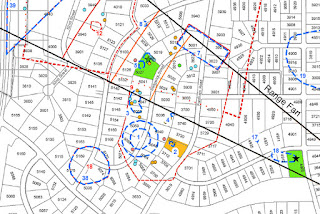When officers led [Rollins Edwards] and a dozen others into a wooden gas chamber and locked the door, he didn't complain. None of them did. Then, a mixture of mustard gas and a similar agent called lewisite was piped inside. "It felt like you were on fire," recalls Edwards, now 93 years old. "Guys started screaming and hollering and trying to break out. And then some of the guys fainted. And finally they opened the door and let us out, and the guys were just, they were in bad shape."

Edwards was one of 60,000 enlisted men enrolled in a once-secret government program — formally declassified in 1993 — to test mustard gas and other chemical agents on American troops. But there was a specific reason he was chosen: Edwards is African-American ... While the Pentagon admitted decades ago that it used American troops as test subjects in experiments with mustard gas, until now, officials have never spoken about the tests that grouped subjects by race ... All of the World War II experiments with mustard gas were done in secret and weren't recorded on the subjects' official military records. Most do not have proof of what they went through. They received no follow-up health care or monitoring of any kind.

And they were sworn to secrecy about the tests under threat of dishonorable discharge and military prison time, leaving some unable to receive adequate medical treatment for their injuries, because they couldn't tell doctors what happened to them ... Mustard gas damages DNA within seconds of making contact. It causes painful skin blisters and burns, and it can lead to serious, and sometimes life-threatening illnesses including leukemia, skin cancer, emphysema and asthma ... Defiance was unthinkable, [Edwards] says, especially for black soldiers. "You do what they tell you to do and you ask no questions," he says.
Caitlin Dickerson
National Public Radio
June 22, 2015
























.jpg)
.jpg)
.jpg)
.jpg)
.jpg)
.jpg)
.jpg)
.jpg)



